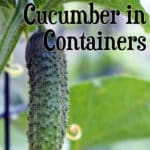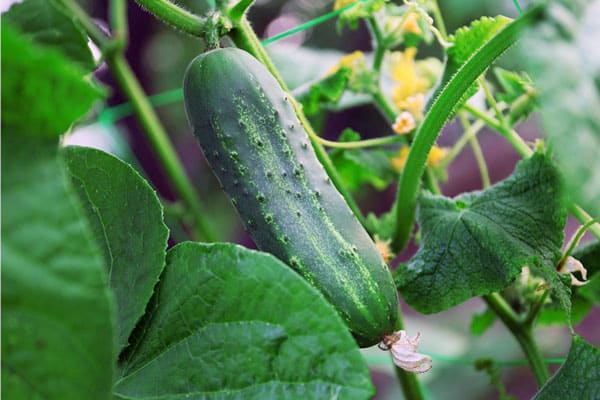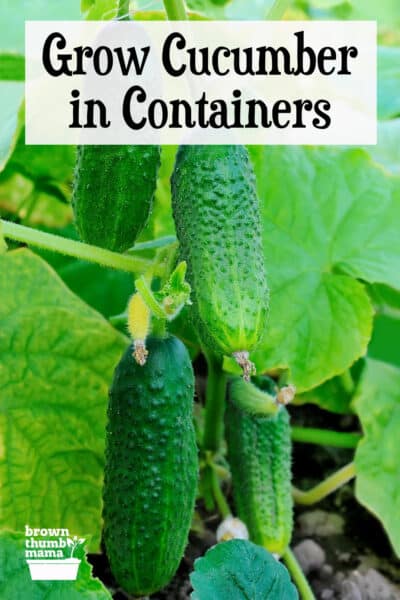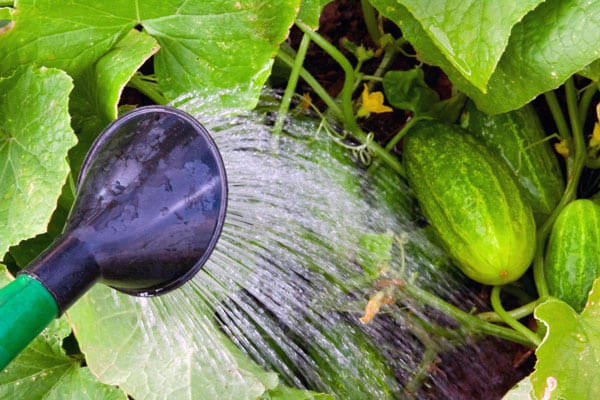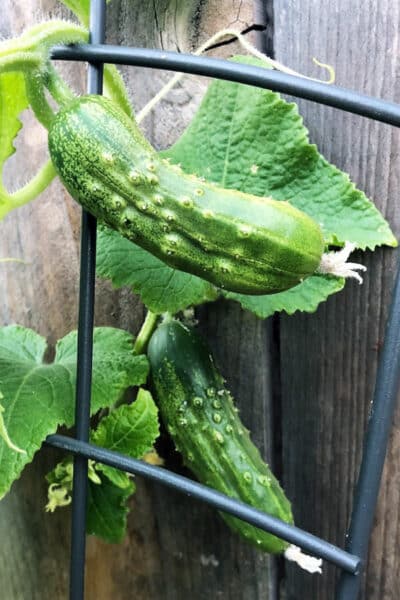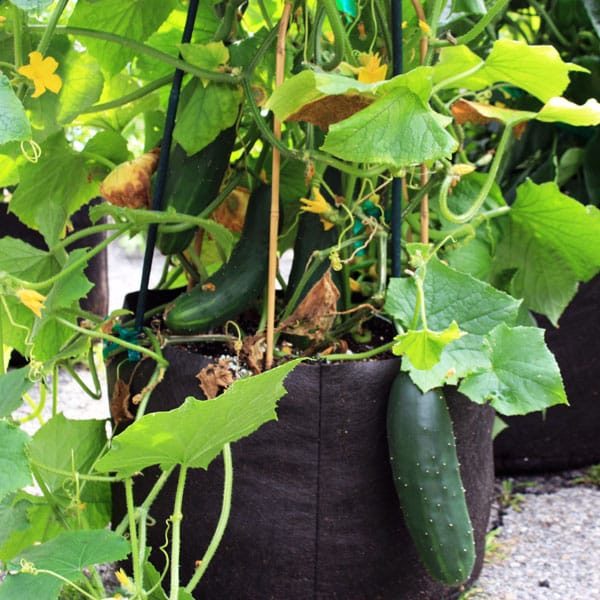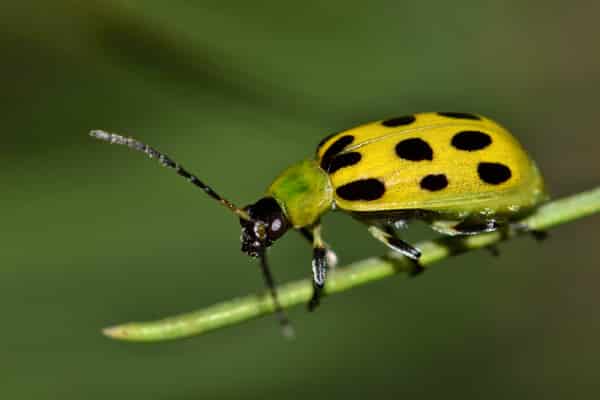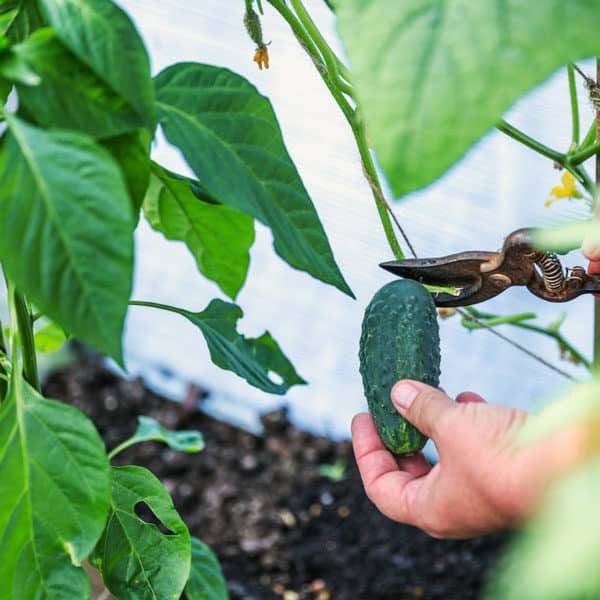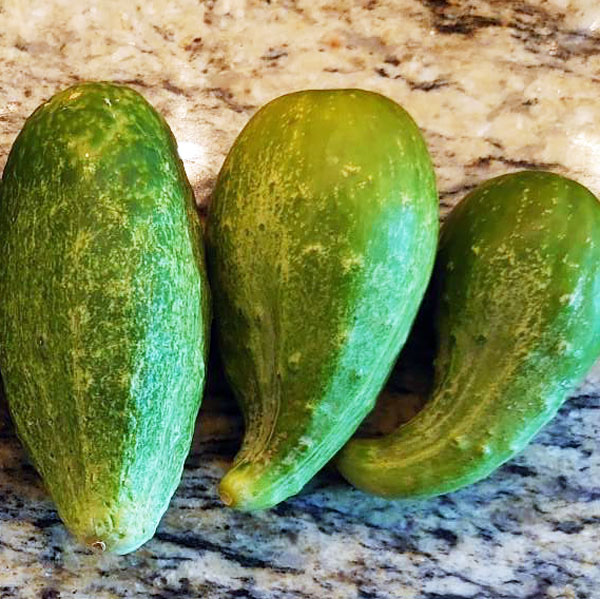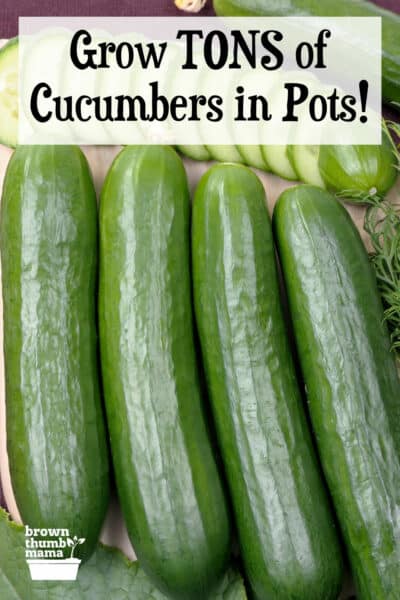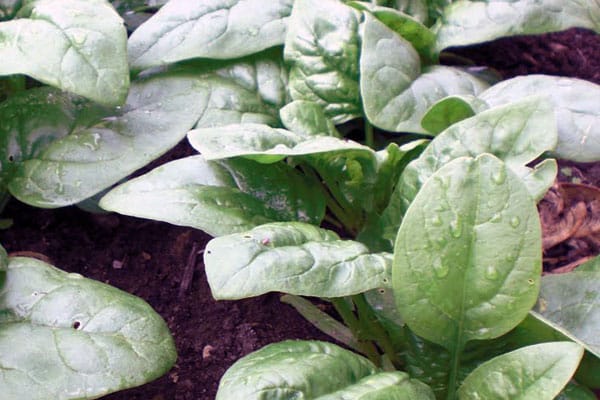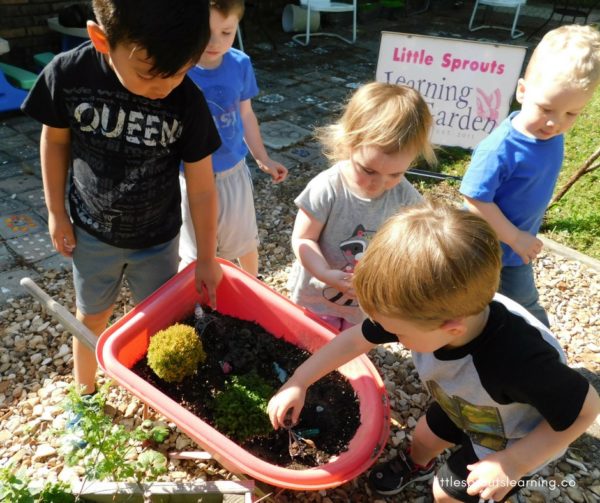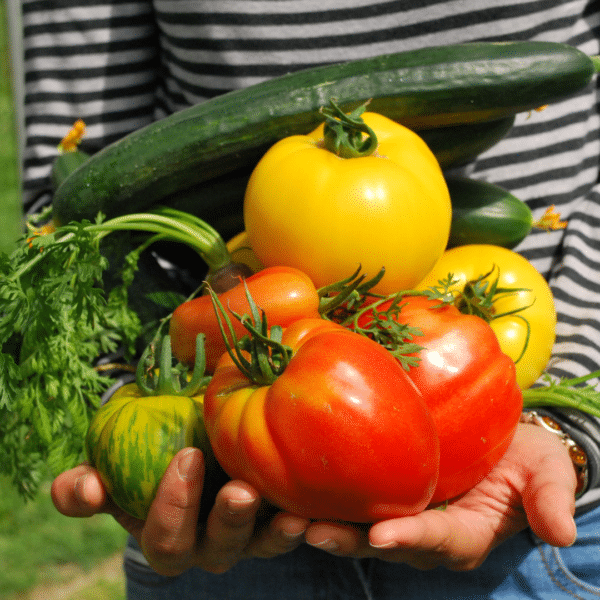This post may include affiliate links.
If you make a purchase, I'll earn a small fee at no extra cost to you.
It’s easy to grow delicious, crisp cucumbers in pots or containers! Includes information on soil, water, fertilizer, best container varieties, and more.
Cucumbers are a great vegetable for small-space gardeners–in fact, they’re one of the 5 Best Vegetables for Container Gardening. Cucumbers are easy to grow, produce tons of vegetables (technically, they are fruits) and they come in many delicious varieties.
We grow at least three varieties of cucumber from seed each year: Tasty Green for salads; Homemade Pickles for—you guessed it; and Persian Baby for snacking. There are even spherical, yellow types called lemon cucumber!
Here’s everything you need to know about planting, growing, and harvesting cucumbers in containers.
Growing Cucumbers in Containers
How much sun do cucumber plants need?
The great part about growing cucumber in containers is that you can place your pots anywhere in your yard, to get the best sunlight. Cucumbers need 6 or more hours of full sun each day for maximum growth.
However: too much sun for too long will prevent fruit from setting. If temperatures exceed 90° F for more than 3 days, move the planter so they get afternoon shade–or consider a rigging up a shade cloth to keep the plants cool.
Do cucumbers need a lot of water?
Cucumbers have shallow roots and require regular watering, especially during flowering and fruiting. You may need to water daily–stick your finger in the soil before watering.
If the soil is damp or wet about two inches below the surface, you don’t need to water. If the soil is dry, then water the base of the plant gently with a rain wand (I love my Dramm Rain Wand) or a watering can. Don’t water the leaves because it can encourage powdery mildew, which can ruin your plants.
Mulching is helpful in retaining moisture and keeping weeds down. If plants don’t get enough water, cucumbers may be curved and bitter. Learn about the best types of mulch to use in your vegetable garden.
What kind of soil should I use?
Please don’t scoop up a bunch of dirt from your yard for your container of cucumbers. Garden soil is too dense and could have fungus, microbes, seeds, bugs, or other critters that will damage your plants.
It’s important to choose the right soil for your container garden, so your vegetables will grow well. Because the plants are growing in a confined space, you want to be sure you’re using potting soil that has all the nutrients your cucumbers need. Here’s how to choose the best soil for your container garden.
Do cucumber plants need fertilizer?
Yes. When you’re growing in containers, it’s important to use fertilizer to ensure your plants have the nutrition they need. This means more flowers, better yields, and improved resistance to pests.
Add some homemade compost to your potting soil while planting, and then apply organic liquid fertilizer to the soil every two weeks.
Planting & Spacing
Use a 5 gallon container or larger for your cucumber plant. All squash plants have large leaves and really like to spread out, so don’t crowd more than one plant into a small container.
If your container of choice doesn’t have drainage holes, add them with a drill or awl before planting. Wet roots will cause a plant to rot and die. I particularly like this planter from Bloem which has a self-watering insert. If you think you’ll need to move your pots during the growing season, you can also get this nifty rolling saucer to put under the planter.
Cucumbers like warm soil! Plant your cucumber seeds or seedlings in the spring after frost danger has passed. The soil temperature must be between 70-85°F.
If you’re planting from seed, sow each seed in a hole about 1” deep. Plop the seed inside, pat the soil over gently, and carefully water with a rain wand or watering can. Your seeds will sprout in 7-10 days.
If you’re planting a seedling, make a large hole about 2” deep, loosen the roots of the seedling, and place into the hole. Fill the hole with soil and pat gently. Give them a little bit of EB Stone Sure Start to get them started with extra nutrients.
What kind of cucumber grows best in a container?
Not all cucumber plants will grow well in containers. You want a compact variety that won’t make giant, eight-foot vines that need trellises for support. Check the seed packet for phrases like “bush cucumber” or “compact variety” to ensure they’ll work in a pot. Here are the best varieties of cucumber to grow in containers.
Can I plant a cucumber from the store to grow more cucumbers?
Sadly, no. Most store-bought cucumbers are hybrids, which means the seeds–even if fertile–will not grow true and the plant will not set fruit. Better to spend a few dollars and get a packet of Tasty Green cucumber seeds.
Cucumber Pests and Diseases
There are a few kinds of insects that like to attack cucumbers. Common pests include slugs and snails, cucumber beetles, squash bugs, and aphids.
Snails and slugs can be exterminated in a variety of ways. Here are mine, in order of preference:
- Offer your kids a bounty for every one they squish. Send them out hunting at dusk with a flashlight for best results.
- My aunt glued a row of pennies along the top edge of all her raised beds to keep the snails out. Apparently, the copper reacts with the snail’s slime to produce a mild electric shock. I haven’t tried this to be sure it works, but it does make a great conversation starter.
- Learn more natural ways to get rid of snails and slugs.
Aphids are common, and relatively easy to manage with natural methods. A blast of water from the hose is your first line of defense. Read more about natural ways to get rid of aphids.
Squash bugs are large brown or grey bugs that are shaped like a shield. The best way to get rid of them is to hand-pick and throw them into a bucket of soapy water. The soap coats their legs and wings so they can’t escape.
Cucumber beetles look like yellow ladybugs, but can be differentiated by their long antennae.
They can spread squash mosaic virus, and are generally bad news. An infestation in a home garden is rare but difficult to control. The UC Department of Agriculture gives some insecticide recommendations here.
Downy mildew and powdery mildew are caused by different fungi, and are hard to treat. It’s best to prevent these diseases by keeping the leaves dry:
- Water the plant at the soil level rather than with an overhead sprinkler.
- Work with the plants and harvest after the morning dew has dried.
Harvesting Cucumbers
It takes cucumbers about 60 days to grow from seed to harvest size. Slicing cucumbers should be harvested when between 6-8 inches long, and pickling cucumbers when less than 3 inches long. Cut the stem, rather than pulling, when the fruit is at the right size. Harvest frequently, because if cucumbers are left on the vine the plant will stop producing.
If you find a cucumber that’s pointy at one end, that particular flower wasn’t adequately pollinated. Every female flower on the cucumber plant must be pollinated several times for the fruit to develop properly. No need to pull the plant out, though. It can still can produce healthy cucumbers in the future–plant some flowers to encourage good pollination for the next crop.
If you grow more cucumbers than you can eat, share your bounty with your local food bank! Food banks don’t often get donations of fruits and vegetables, and their clients will welcome the fresh food. You can find your local food bank at Feeding America.org.


